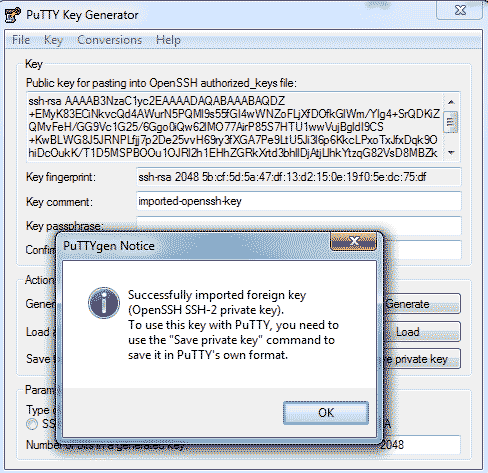Generate Public Key For Vagrant
So you generate a key pair on your own computer, and you copy the public key to the server under a certain name. Then, when the server asks you to prove who you are, WinSCP can generate a signature using your private key. The server can verify that signature (since it has your public key) and allow you to log in. The default private key ships with Vagrant, so there are no additional steps either. Just use the corresponding public key in the VM. Adding and shipping a custom key might only make sense when you control the distribution of the box, and don't want anyone else to be able to log in to running instances. Jul 21, 2018 How to create ssh public key from private key - Vagrant & Linux How to create SSH public Key from SSH private key is a question made me write this post. Though we would be able to achieve the SSH key-based authentication by producing the private key. Sometimes it is necessary that we must have the SSH public key. Config.ssh.privatekeypath (string, array of strings) - The path to the private key to use to SSH into the guest machine. By default this is the insecure private key that ships with Vagrant, since that is what public boxes use. If you make your own custom box with a custom SSH key, this should point to that private key.

To sign an assembly with a strong name, you must have a public/private key pair. This public and private cryptographic key pair is used during compilation to create a strong-named assembly. You can create a key pair using the Strong Name tool (Sn.exe). Key pair files usually have an .snk extension.
Note
In Visual Studio, the C# and Visual Basic project property pages include a Signing tab that enables you to select existing key files or to generate new key files without using Sn.exe. In Visual C++, you can specify the location of an existing key file in the Advanced property page in the Linker section of the Configuration Properties section of the Property Pages window. The use of the AssemblyKeyFileAttribute attribute to identify key file pairs was made obsolete beginning with Visual Studio 2005.
Create a key pair
To create a key pair, at a command prompt, type the following command:
sn –k <file name>
In this command, file name is the name of the output file containing the key pair. Sdes p10 and p8 key generation.
Generate Public Key For Vagrant Free
The following example creates a key pair called sgKey.snk.
If you intend to delay sign an assembly and you control the whole key pair (which is unlikely outside test scenarios), you can use the following commands to generate a key pair and then extract the public key from it into a separate file. First, create the key pair:
Next, extract the public key from the key pair and copy it to a separate file:
Symmetric Key
Once you create the key pair, you must put the file where the strong name signing tools can find it.
When signing an assembly with a strong name, the Assembly Linker (Al.exe) looks for the key file relative to the current directory and to the output directory. When using command-line compilers, you can simply copy the key to the current directory containing your code modules.
Generate Public Key For Vagrant Box
If you are using an earlier version of Visual Studio that does not have a Signing tab in the project properties, the recommended key file location is the project directory with the file attribute specified as follows: